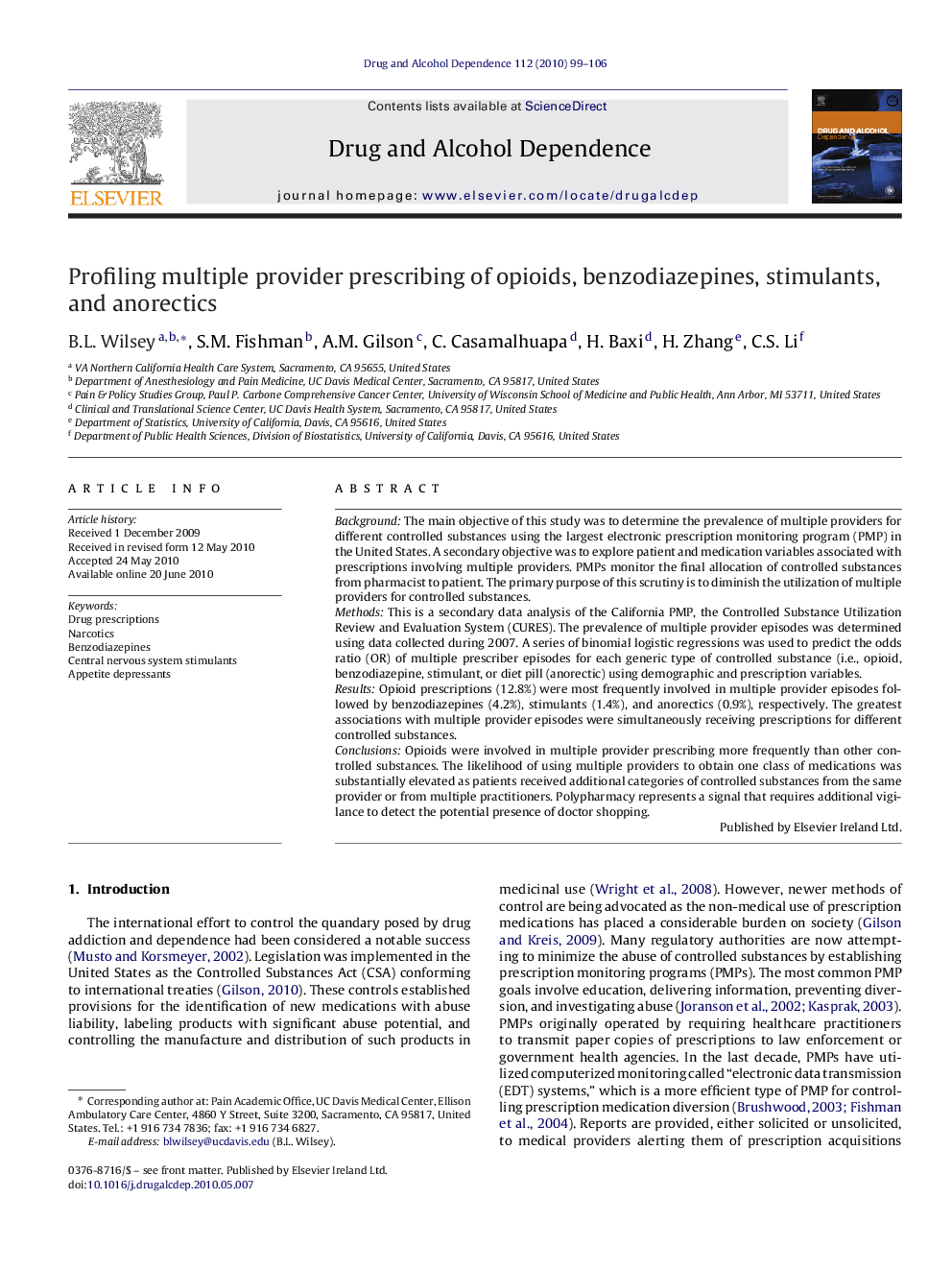| کد مقاله | کد نشریه | سال انتشار | مقاله انگلیسی | نسخه تمام متن |
|---|---|---|---|---|
| 1070516 | 1486178 | 2010 | 8 صفحه PDF | دانلود رایگان |

BackgroundThe main objective of this study was to determine the prevalence of multiple providers for different controlled substances using the largest electronic prescription monitoring program (PMP) in the United States. A secondary objective was to explore patient and medication variables associated with prescriptions involving multiple providers. PMPs monitor the final allocation of controlled substances from pharmacist to patient. The primary purpose of this scrutiny is to diminish the utilization of multiple providers for controlled substances.MethodsThis is a secondary data analysis of the California PMP, the Controlled Substance Utilization Review and Evaluation System (CURES). The prevalence of multiple provider episodes was determined using data collected during 2007. A series of binomial logistic regressions was used to predict the odds ratio (OR) of multiple prescriber episodes for each generic type of controlled substance (i.e., opioid, benzodiazepine, stimulant, or diet pill (anorectic) using demographic and prescription variables.ResultsOpioid prescriptions (12.8%) were most frequently involved in multiple provider episodes followed by benzodiazepines (4.2%), stimulants (1.4%), and anorectics (0.9%), respectively. The greatest associations with multiple provider episodes were simultaneously receiving prescriptions for different controlled substances.ConclusionsOpioids were involved in multiple provider prescribing more frequently than other controlled substances. The likelihood of using multiple providers to obtain one class of medications was substantially elevated as patients received additional categories of controlled substances from the same provider or from multiple practitioners. Polypharmacy represents a signal that requires additional vigilance to detect the potential presence of doctor shopping.
Journal: Drug and Alcohol Dependence - Volume 112, Issues 1–2, 1 November 2010, Pages 99–106